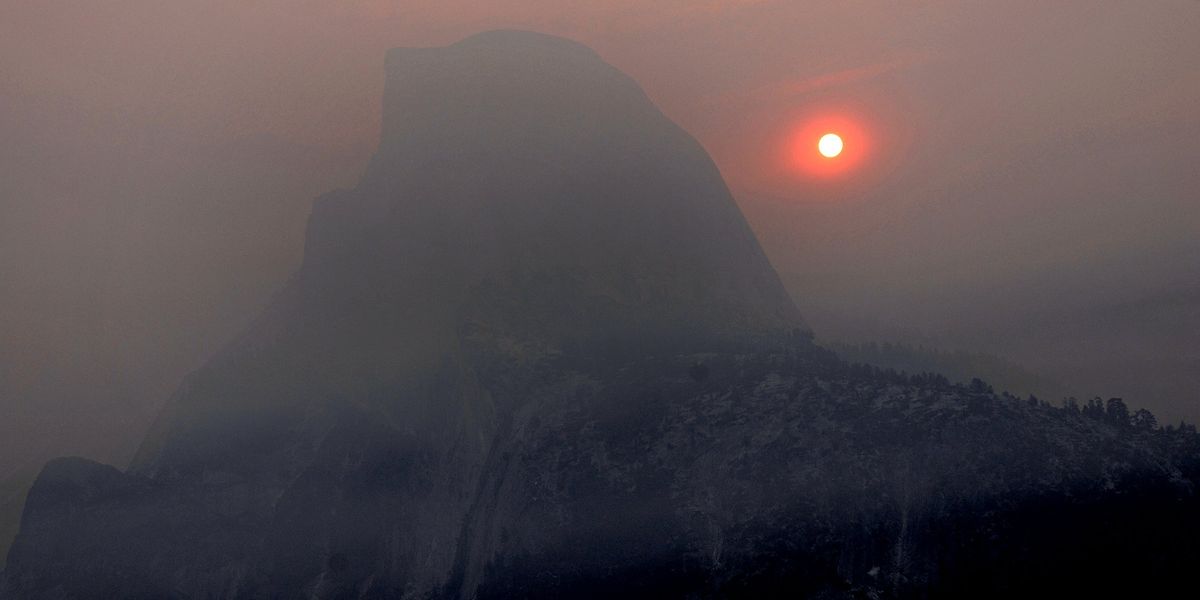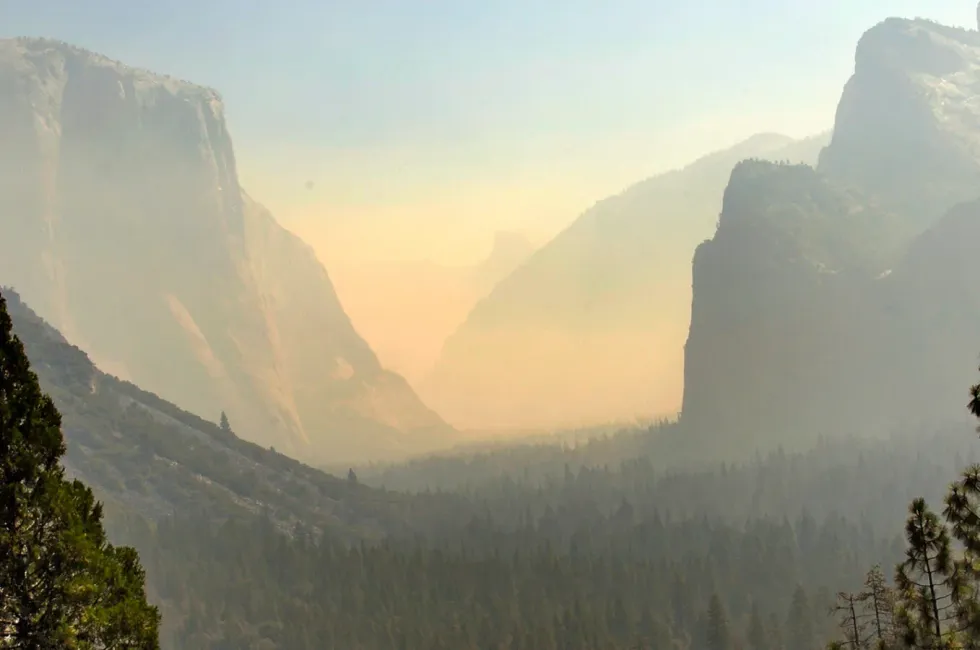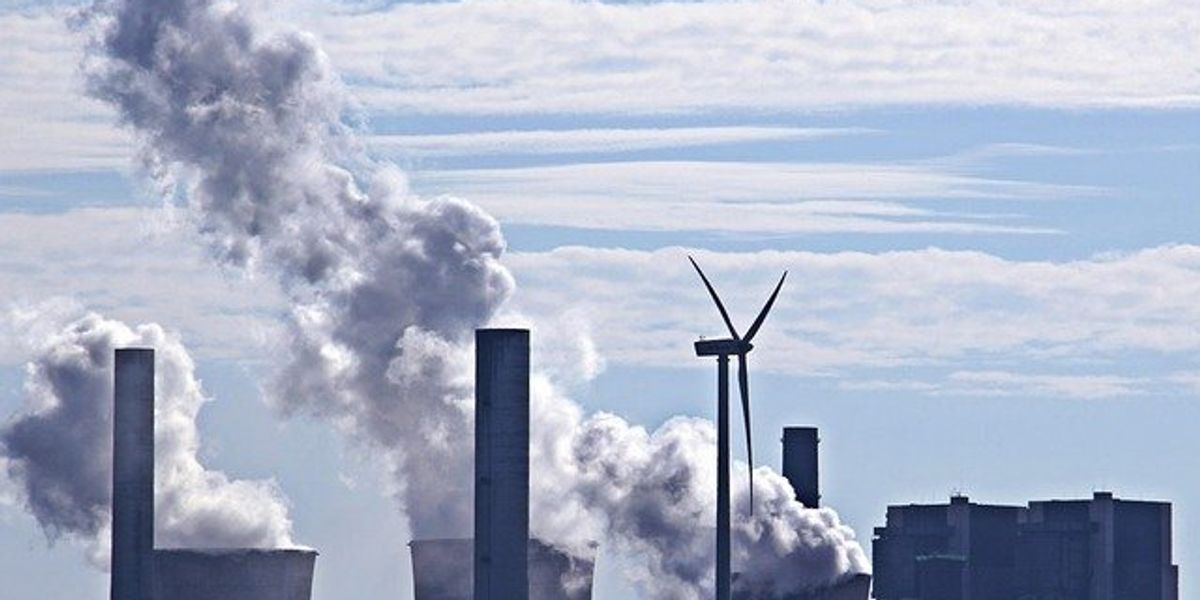
National Parks' grandeur degraded by global warming
If there is anywhere in the nation that holds the promise to inspire unified action on climate change, it is the national parks.
My window into global warming ruining a rite of summer came 16 years ago.
I was flat on my back on blankets, under the stars in the middle of the night at Glacier Point in Yosemite National Park. At 7,214 feet and more than a half mile above Yosemite Valley, this was a perfect place to watch the August Perseid meteor shower sizzle overhead.
For a precious hour or so, zips of light etched the skies, punctuated by periodic long trails and fireballs. Then, shortly after 3 a.m., a milky film slid across the sky as if a window shade were being closed sideways. My eyes fought to peer through the thickening mystery until even the brightest bursts of light were obliterated. Because the weather forecast called for clear skies, I kept hoping it was rogue cloud cover. I stuck it out until dawn.
It was a daylight I had never seen or smelled. Glacier Point is famous for its spectacular vantage point of looking straight across a gulf to 8,839-foot Half Dome. It is a view made famous by photographer Ansel Adams. Unlike a sunrise that quickly brightens from gold to blinding white, the sun rose behind Half Dome as a pinkish-orange pinhole and bizarrely remained a tiny, reddish-orange pea in the sky more than an hour later.
It was because of smoke during the 2007 wildfire season in the United States, the second worst at the time for acreage burned. It was an apocalyptic encore of the worst-ever 2006 season that saw 9.9 million acres burned. The smoke draped so thick over Half Dome that its chiseled granite features were lost in silhouette. The odor of burnt wood saturated my nose.
After a couple hours, I drove down to Yosemite Valley. Before I got there, I stopped at another view Adams made famous, the sight of the valley from the Wawona Tunnel. On clear days, the sight of 7,500-foot El Capitan on the left, Bridalveil Falls plunging 600 feet on the right, Half Dome in the middle, and conifer forest below can well up the eyes.
On this morning, the view was obscured by a golden dust bowl as smoke settled in the valley.
Smoky norms

Half Dome nearly obscured by wildfire smoke.
Credit: Derrick Z. Jackson
This was just a prelude. In 2015, then again in 2020, the number of burned acres from wildfires crossed the 10 million-acre mark. The view of Yosemite Valley has repeatedly been obscured by wildfire smoke, including in 2018, 2020, and last year, when fires forced park closures and evacuations. It is a reason why Yosemite is a poster park of global warming, beset in recent years not just by drought, blistering heatwaves and wildfires, but also by epic blizzards and snowmelt floods. Parts of the park were closed for several days this spring over fears of flooding.
All those extreme events are made more likely by global warming.
Beth Pratt, the California regional executive director for the National Wildlife Federation, told the Guardian newspaper in April, “Yosemite is ground zero for climate change.” A Los Angeles Times feature seconded that, reporting that climate change “has been one of the park’s biggest challenges in recent years, undermining the concept of Yosemite as a refuge where nature prevails unaffected by man-made forces.”

An unsettling haze in Yosemite Valley.
Credit: Derrick Z. Jackson
It also undermines the concept of national parks being a refuge for families seeking nature. Wildfires in 2021 temporarily closed Sequoia National Park and a popular part of Big Bend National Park in Texas. Wildfires have led to multiple closures in recent years in and around the Grand Canyon.
Last year, record rainfalls triggered floods and mudslides and temporarily closed Yellowstone. Monsoon rains unleashed flash floods that buried cars in Death Valley and floods that caused closures in Joshua Tree National Park and the Mojave National Preserve. Out east, flash floods from deluges caused landslides and partial closures and evacuations in Smoky Mountains National Park.
This summer has just started and wildfires have already led to closures in parks as far apart as Joshua Tree in California and Big Cypress National Preserve in Florida. Several roads in Sequoia and Kings Canyon National Park remain closed because of severe road damage from epic winter storms.
Parks heating faster than the nation as a whole
It begs the question of how often families must be smoked out, scorched out, or flooded out of parks for these treasures become a more prominent rallying cry to fight global warming. National parks are unique for their locations at high and low elevations and delicate layers of ecosystems. It makes them ripe for disproportional impacts from climate change, relative to the nation in general.
According to studies in 2018 and 2020 led by Patrick Gonzalez, who was the principal climate scientist for the National Park Service, a White House climate advisor, and a lead author on the Intergovernmental Panel on Climate Change, the mean annual temperature of the parks has increased at double the US rate since 1895.
Without major reductions in the carbon emissions fueling global warming, the impacts on the parks would be endless. Even under a scenario of drastic emissions reductions, Gonzalez’s 2018 study found that more than half of national park area would exceed the 3.6-degree Fahrenheit limits set by the Paris Agreement to avoid catastrophic climate impacts—more than double the 22 percent of the US as a whole that would exceed that temperature. The 2020 study offered an exclamation point:
“Without emissions reductions, climate change could increase temperatures across the national parks, up to 9ºC (16ºF) by 2100 in parks in Alaska. This could melt all glaciers from Glacier National Park, raise sea level enough to inundate half of Everglades National Park, dissolve coral reefs in Virgin Islands National Park through ocean acidification, and damage many other natural and cultural resources.”
Since wildfires and their smoke are currently so prominent in the news, it is of note that Gonzalez’s 2020 study predicts that the frequency of wildfire could increase by up to 300 percent in Yosemite and the Sierra Nevada, and up to 1,000 percent in Yellowstone and the Grand Tetons. In 2019, Gonzalez, despite being pressured by superiors during the Trump administration to not talk about “anthropogenic,” or human-caused climate change, testified to Congress that, “Cutting carbon pollution would reduce human-caused climate change and help save our national parks for future generations.”
Crowds grow even as temperatures rise

Michelle Holmes, the author’s wife, wades across the shallow Rio Grande to Mexico.
Credit: Derrick Z. Jackson
So far, saving the parks has not been enough to inspire Congress toward mandatory cuts to carbon pollution. Nor has any amount of wildfire smoke or flood damage kept the crowds away. Park attendance has steadily increased over the years, to about 330 million a year before the pandemic, and 311 million last year as leisure travel returned to close to normal. That is the equivalent of every person in the United States visiting a park during the year. Visitors now spend more than $20 billion a year in the gateway regions of the parks, supporting 323,000 local jobs.
Two studies, one last year in the journal Forest Policy and Economic and another last month in the journal Ecosphere, found that wildfire smoke thus far has not limited park visitation. Boise State University researcher Matthew Clark, lead author of last month’s study, said, “I have actually lived my data. I had driven six hours to go climbing in Yosemite. When we got there, we said, ‘Well, what are we going to do? We’re not going to turn around.’ We stayed anyway.”
Clark added, “I was kicking myself for days afterward. My lungs were burning.”
Paradoxically, global warming might entice even more people to come to the parks, putting pressure on a National Park Service that has long dealt with chronic underfunding of services and a $22 billion backlog of deferred maintenance. A 2015 study by the National Park Service estimates that the warmer temperatures associated with global warming will lengthen the shoulder seasons for visitation in most parks, as so many of them are either in historically colder mountainous regions or in more northerly latitudes.
Examples of that in the study are the popular and often packed Acadia in Maine, Grand Teton in Wyoming, and the Blue Ridge Parkway stretching from the North Carolina side of Great Smoky Mountains National Park to Shenandoah National Park in Virginia.
Conversely, a few parks, particularly in deserts, might become intolerable much of the year, such as Joshua Tree (which would lose all its Joshua trees under high emissions scenarios), Arches in Utah, and Big Bend in the southwest bottom of Texas.
Big temperatures in Big Bend

The night sky over Big Bend National Park.
Credit: Derrick Z. Jackson
In April, my wife and I traveled to Big Bend. We were there to enjoy one of the nation’s birding hotspots. My wife saw more than 50 new species for her list in one week, with vermillion flycatchers and painted buntings hugging watery areas along the Rio Grande. At night, I was treated to the darkest skies and clearest views of the Milky Way I’ve ever seen.
Most of our time there, the temperatures were comfortably warm. We had only one 100-degree day. That is changing rapidly for future visitors. Under current emissions rates, Climate Central estimates that Big Bend will see the largest increase in temperatures in the national park system by 2100. Its number of life-threatening, 100+ degree days will explode by six and a half times, from 17 days a year to 113 days a year. According to Backpacker magazine, Big Bend is already the nation’s third most dangerous park because of its heat.
On June 23, a 14-year-old boy died hiking in 119-degree heat and his stepfather died in a car crash over an embankment, speeding for help. That followed the respective hiking deaths this past March and in March 2022 of a 64-year-old woman and a 53-year-old woman in temperatures approaching or topping 100 degrees.
Big Bend’s defining river feature, the Rio Grande, is no longer a naturally flowing river because of dams and irrigation diversions for agriculture. It so routinely runs dry that the National Park Service says it is not managed to maintain a flow to sustain riverbank habitat. Half of the 27 historically native fish to the river in New Mexico no longer exist.
On our visit, the Rio Grande was so shallow that on one day, my wife and I easily waded across in knee-deep water into Boquillas, Mexico for lunch. On another day, we felt lucky there was any water at all. We waded across a creek in the spectacular Santa Elena Canyon. Last year, the river completely dried up, leaving the classic cracked patterns of parched earthen floor. “There’s not a little bit of river that’s dedicated to keeping it a river, and keeping the living things of the river, not even healthy, but surviving,” Raymond Skiles told Marfa Public Radio in far west Texas last year. Skiles was Big Bend’s biologist for 30 years before retiring in 2018.
“This is happening in a national park,” he said. “This is happening in a component of the United States’ Wild and Scenic River system. I have to think, what world is this okay in, for the river just to stop because of human extraction and depletion of the river?”
Hope through the haze
That question can easily be extended to ask, in what world is it okay to allow our crowning jewels of nature and landscapes to be depleted by our extraction of fossil fuels?
Since that night 16 years ago when my view of the Perseids disappeared, wildfire smoke has almost become a normal part of forecasting whether the skies will allow people to see the meteors. A 2018 headline in San Francisco Bay Area’s Mercury News asked: “Will smoke from California fires block this weekend’s Perseid meteor shower?
Three years later a headline in the Oregonian said, “Perseid meteor shower returns for 2021, wildfire smoke could dampen the show.” In Great Sand Dunes National Park in Colorado, volunteer astronomy ranger Bob Bohley told the New York Times in 2021 that the viewing conditions for much of the summer were “horrible” because of smoke.
“Some nights it’s been so thick that even the brightest stars were hard to make out,” Bohley said. “I would just point in the direction of a constellation and hope folks would see something.”
For decades we have pointed people in the direction of the national parks in the hopes that families would see flora, fauna, landscapes, seascapes, and night skies to peer into infinity. As great as his photography was, Ansel Adams said, “You don’t improve nature. You reveal your impression of nature or nature’s impact on you.”
Perhaps we cannot improve nature, but we can sure preserve it. And if there is anywhere in the nation that holds the promise to inspire unified action on climate change, it is the national parks. We flock to them, knowing we will be impressed and hoping to be inspired. The National Park Service is our most popular federal agency, with 81 percent of respondents in a Pew survey this spring saying they have a favorable view of it and 82 percent saying in a 2019 poll that the nation should use oil and gas leasing fees to pay for the deferred maintenance of the parks.
Such support led to the Great American Outdoors Act, overwhelming passed in 2020 by a usually bitterly divided Congress and signed by President Trump, despite his relentless assault on conservation and science and his gutting of environmental regulations that would have reduced the carbon pollution fueling global warming. The act authorized Congress to spend up to $6.65 billion over five years on deferred maintenance in national parks. The National Parks Conservation Association praised the act for providing “crucial funding” to start repairing the parks.
The association also warned that the funding, at $1.3 billion a year against a $22 billion backlog, should only be the beginning of proper protection, as it does not “account for unforeseen damage our parks will continue to deal with as a result of climate change like the devastating flooding at Yellowstone and raging wildfires at Yosemite.”
To borrow from Bohley back at Great Sand Dunes, no one wants the parks to get to the point where the roads are impassible, the hikes too hot, and the stars are impossible to make out. People all over the world, more than 300-million-a-year-strong, say loud and clear that the national parks are our constellation, right here on earth.













